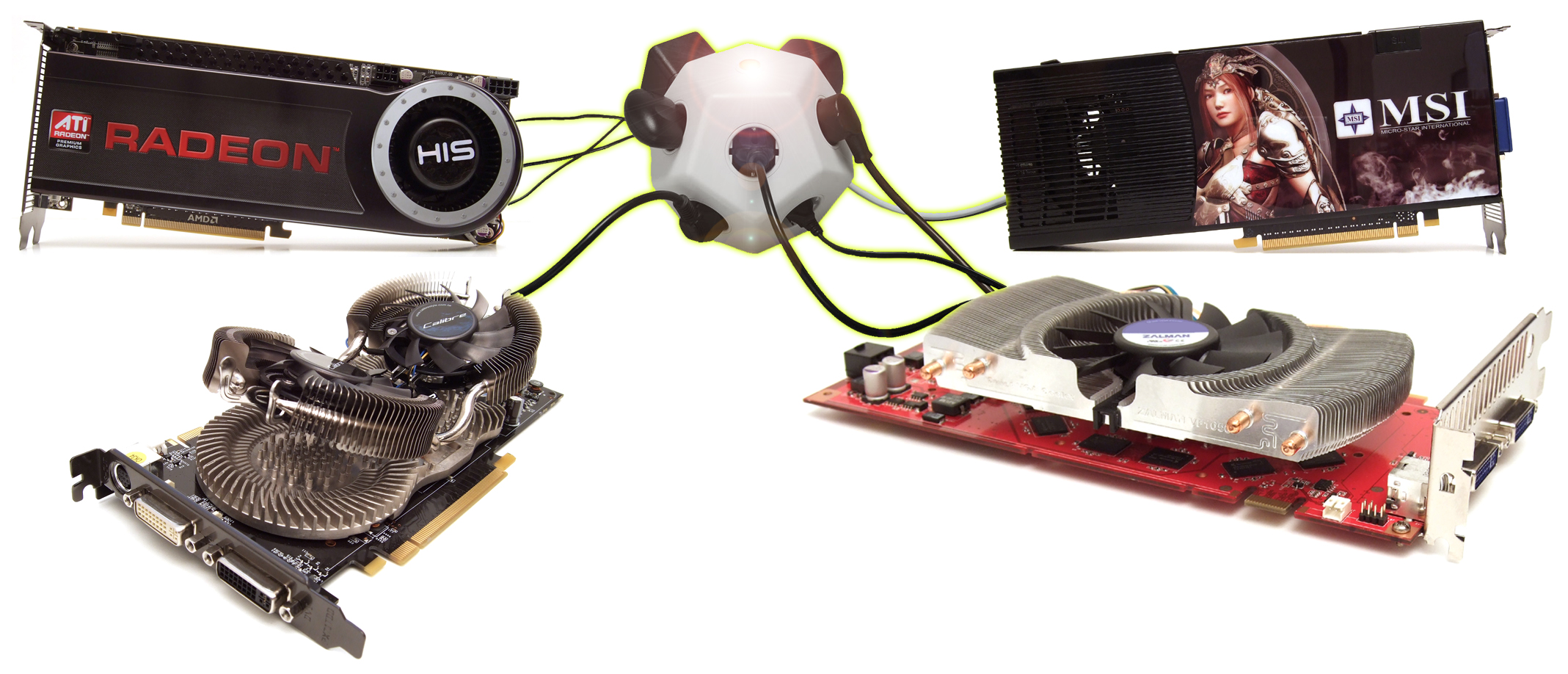How Much Power Does Your Graphics Card Need?
3D Performance Requires The Most Electricity
The power consumption of today's graphics cards has increased a lot. The top models demand between 110 and 270 watts from the power supply; in fact, a powerful graphics card under full load requires as much power as the rest of the components of a PC system combined. If you’re planning to upgrade to a dual-chip card or to extend your system with a second video card using SLI or CrossFire, then the GPU plays the biggest role in determining how many watts your next power supply must be capable of providing.

A stable power source is important if you want to avoid full-load crashes of the operating system, a.k.a. the dreaded “blue screen.” If you don’t have enough juice, then the PC or the power supply overheats, in the worst case, with a loud bang. The most important questions are: how many watts should the power supply have, does it deliver enough amps, and which plugs or adapters are necessary for the supply?
Of course, cost is also a factor. With today’s electricity prices, you must assess not just the cost of the hardware but also estimate the power used over the course of an entire year. If you don’t need ultimate 3D performance and are looking for a graphics card for your HTPC that’s more economical, you can compare four generations of AMD and Nvidia chips here.
Get Tom's Hardware's best news and in-depth reviews, straight to your inbox.
Current page: 3D Performance Requires The Most Electricity
Next Page Graphic Chip Comparison And Test Configuration-
nukemaster This article was due. No more you need an 800 watt psu for the 4870 , core2 quad ad 1 hard drive anymore :pReply
Guest11since Core i7 920 has TDP = 130W, how can it consume 85W only?The TDP is more of a design thing. Almost all of Intels initial Core2 line had a TDP of 65 watts yet many took much less power. Intel gives a worst case of that type number and does not measure every cpu.
AMD does the same thing. They listed almost all the initial Athlon 64's at 89 watts yet many did not take that or give off that amount.
zxv9511.21 Jigawatts !!!You act like you would need a small fusion reactor or maybe a bolt of lightning to get that? -
neiroatopelcc So my system actually has a too big power supply to be effective?Reply
I'm running a 3,4ghz c2d with 5x500gb sata drives, a dvdrw and a 4870 on a p35 board.
According to the article that's not going to draw the ~400W needed to get within effective range of my corsair 620 .... -
cynewulf There's a mistake in the power under load for the 3870X2. It shows the same as the idle consumption. If only that were true! :DReply -
Inneandar The TDP (thermal design power) is meant to be a guideline for the cooling solution, not the power consumption. To qualify for a cpu with a TDP of 120W, a cooler must be able to dissipate 120W. Practically, of course, this means it is an upper bound to (sensible) power consumption.Reply
also small note: Is it just me or is it strange to see the 260 SLI consume more than the 280 SLI. maybe in need of a beefier test scene... -
zodiacfml nice collection of data. i hope many learn from this and avoid recommending too powerful supplies.Reply -
roofus better off with too much power supply than not enough. at least if you over-spec the power supply you leave some breathing room for any additional components.Reply